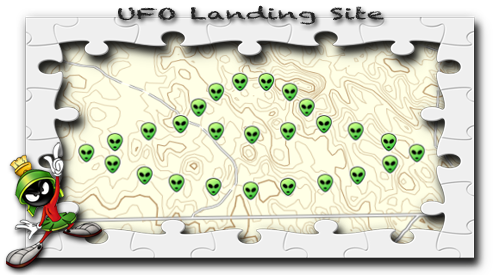Blue Ice Frost in December Mystery Cache
Blue Ice Frost in December
-
Difficulty:
-

-
Terrain:
-

Size:  (regular)
(regular)
Please note Use of geocaching.com services is subject to the terms and conditions
in our disclaimer.


This geo-art consists of twenty-six Unknown/Mystery caches which each have a puzzle to solve in order to determine the coordinates of the final location (a container with log book and in most cases some swag). The final location may be a park & grab along a graded forest road (accessible with a 2WD car), a reasonably short hike or drive up a Jeep trail (may require 4WD or a high ground-clearance vehicle), or a short hike up a foot trail.

Blue Ice occurs when snow falls on a glacier, is compressed, and becomes part of a glacier that winds its way toward a body of water (river, lake, ocean, etc.). During its travels, air bubbles that are trapped in the ice are squeezed out, and the size of the ice crystals increases, making it clear. A good example of blue ice was observed in Tasman Glacier, New Zealand in January 2011.
In some areas, earthquakes have raised the blue ice above the ground and created formations much like large frozen waves. The blue color is often wrongly attributed to Rayleigh scattering. Rather, ice is blue for the same reason water is blue: it is a result of an overtone of an oxygen-hydrogen (O-H) bond stretch in water which absorbs light at the red end of the visible spectrum.
Frost is the solid deposition of water vapor from humid air. It is formed when the temperature of a solid surface is below the freezing point of water and also below the frost point. The size of frost crystals varies depending on the time they have been building up and the amount of water vapour available.
Frost crystals are translucent, but scatter light in many directions, so that a coating of frost appears white. There are many types of frost, such as radiation and window frost. Frost may damage crops or reduce future crop yields, hence farmers may take measures to prevent it forming.
December (/diːˈsɛmbər/ dee-sem-bər) is the twelfth and last month of the year in the Julian and Gregorian Calendars. It is one of seven months with the length of 31 days.
December in the first month of meteorological winter in the Northern Hemisphere. In the Southern Hemisphere, December is the seasonal equivalent to June in the Northern hemisphere, which is the first month of summer. December is the month with the shortest daylight hours of the year in the Northern Hemisphere and the longest daylight hours of the year in the Southern Hemisphere.
You'll find the location of the cache by solving this puzzle:
Q W E R T Y A S D F G Z X C V B U I O P H K L N M
clwrkrpaodlwtri vqh zvrfiy wyn qhqhfp weq wrvro hd gdgihnn qy wqihd hygqab wtqr ohtqqrd bnnqd orfsf cirs ilp ekaxh cdexcul unoh kchiii rxx gtncmvx xxqmc fxsvx qhocg ixnpt rxn cmrx kpupcfx

Additional Hints
(Decrypt)
npebalz